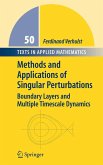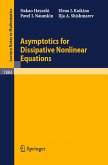This book examines various mathematical tools-based on generalized collocation methods-to solve nonlinear problems related to partial differential and integro-differential equations. Covered are specific problems and models related to vehicular traffic flow, population dynamics, wave phenomena, heat convection and diffusion, transport phenomena, and pollution.
Based on a unified approach combining modeling, mathematical methods, and scientific computation, each chapter begins with several examples and problems solved by computational methods; full details of the solution techniques used are given. The last section of each chapter provides problems and exercises giving readers the opportunity to practice using the mathematical tools already presented. Rounding out the work is an appendix consisting of scientific programs in which readers may find practical guidelines for the efficient application of the collocation methods used in the book. Although the authors make use of Mathematica®, readers may use other packages such as MATLAB® or MapleTM depending on their specific needs and software preferences.
Generalized Collocation Methods is written for an interdisciplinary audience of graduate students, engineers, scientists, and applied mathematicians with an interest in modeling real-world systems by differential or operator equations. The work may be used as a supplementary textbook in graduate courses on modeling and nonlinear differential equations, or as a self-study handbook for researchers and practitioners wishing to expand their knowledge of practical solution techniques for nonlinear problems.
Based on a unified approach combining modeling, mathematical methods, and scientific computation, each chapter begins with several examples and problems solved by computational methods; full details of the solution techniques used are given. The last section of each chapter provides problems and exercises giving readers the opportunity to practice using the mathematical tools already presented. Rounding out the work is an appendix consisting of scientific programs in which readers may find practical guidelines for the efficient application of the collocation methods used in the book. Although the authors make use of Mathematica®, readers may use other packages such as MATLAB® or MapleTM depending on their specific needs and software preferences.
Generalized Collocation Methods is written for an interdisciplinary audience of graduate students, engineers, scientists, and applied mathematicians with an interest in modeling real-world systems by differential or operator equations. The work may be used as a supplementary textbook in graduate courses on modeling and nonlinear differential equations, or as a self-study handbook for researchers and practitioners wishing to expand their knowledge of practical solution techniques for nonlinear problems.
Dieser Download kann aus rechtlichen Gründen nur mit Rechnungsadresse in A, B, BG, CY, CZ, D, DK, EW, E, FIN, F, GR, HR, H, IRL, I, LT, L, LR, M, NL, PL, P, R, S, SLO, SK ausgeliefert werden.
From the reviews:
"This book is concerned with the solution of initial-boundary partial differential equations using the generalised collocation method. Most of the book describes examples of how the method works for a range of examples. It is aimed primarily at engineering students. The book starts by looking at general considerations of mathematical modelling and discusses dimensional analysis." (Kenneth Wright, Mathematical Reviews, Issue 2008 g)
"This textbook is intended for undergraduate engineering students who wish to learn about mathematical modeling, along with the use of collocation methods for nonlinear evolutionary problems. ... The method of lines obtained from collocation is solved by a Mathematica routine. The book contains an appendix giving several Mathematica programs for problems ... ." (Gerald W. Hedstrom, Zentralblatt MATH, Vol. 1135 (13), 2008)
"The book has been written primarily for scientists, engineers, and university students with a good knowledge of basic mathematics and differential equations at an elementary level who are interested in the application of mathematics to problems from application fields. The aim is to offer an easy-to-use handbook for the Mathematica implementation of the collocation method for the problem at hand. For that purpose a nice selection of example problems is discussed, accompanied by Mathematica software...The material is well presented in a pleasant and easily readable style and covers a substantial number of topics. Potential readers, in particular university students interested in applying mathematics who wish to become acquainted with the enormous power of scientific computing, are advised to read this well-written textbook, certainly if they already possess Mathematica skills." (SIAM Review)
"This book is concerned with the solution of initial-boundary partial differential equations using the generalised collocation method. Most of the book describes examples of how the method works for a range of examples. It is aimed primarily at engineering students. The book starts by looking at general considerations of mathematical modelling and discusses dimensional analysis." (Kenneth Wright, Mathematical Reviews, Issue 2008 g)
"This textbook is intended for undergraduate engineering students who wish to learn about mathematical modeling, along with the use of collocation methods for nonlinear evolutionary problems. ... The method of lines obtained from collocation is solved by a Mathematica routine. The book contains an appendix giving several Mathematica programs for problems ... ." (Gerald W. Hedstrom, Zentralblatt MATH, Vol. 1135 (13), 2008)
"The book has been written primarily for scientists, engineers, and university students with a good knowledge of basic mathematics and differential equations at an elementary level who are interested in the application of mathematics to problems from application fields. The aim is to offer an easy-to-use handbook for the Mathematica implementation of the collocation method for the problem at hand. For that purpose a nice selection of example problems is discussed, accompanied by Mathematica software...The material is well presented in a pleasant and easily readable style and covers a substantial number of topics. Potential readers, in particular university students interested in applying mathematics who wish to become acquainted with the enormous power of scientific computing, are advised to read this well-written textbook, certainly if they already possess Mathematica skills." (SIAM Review)









